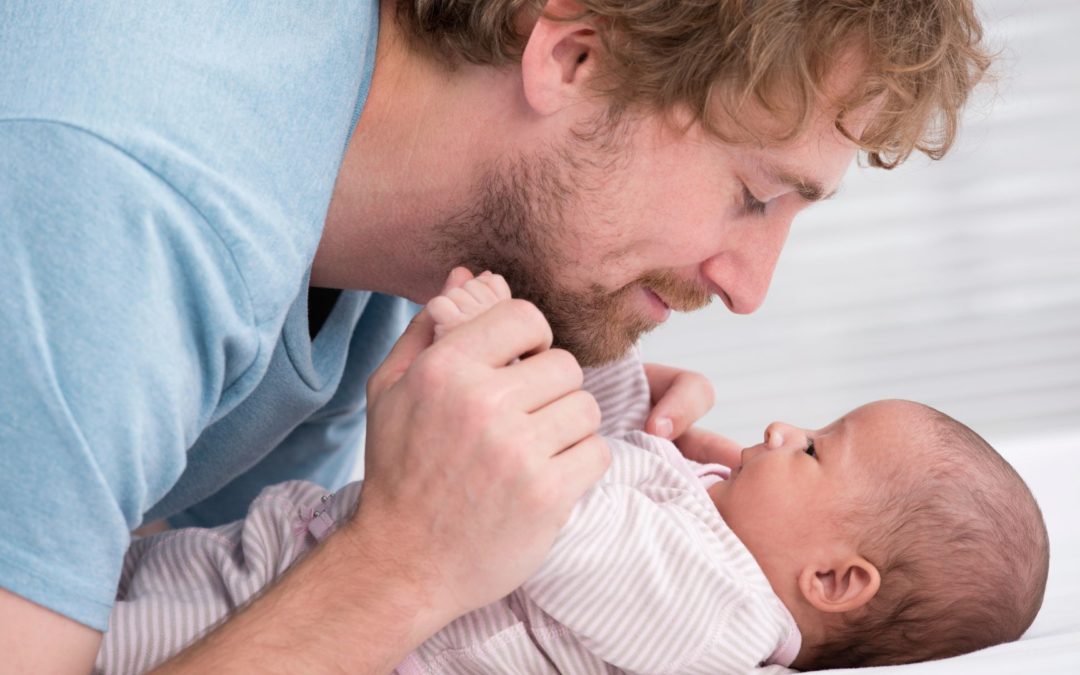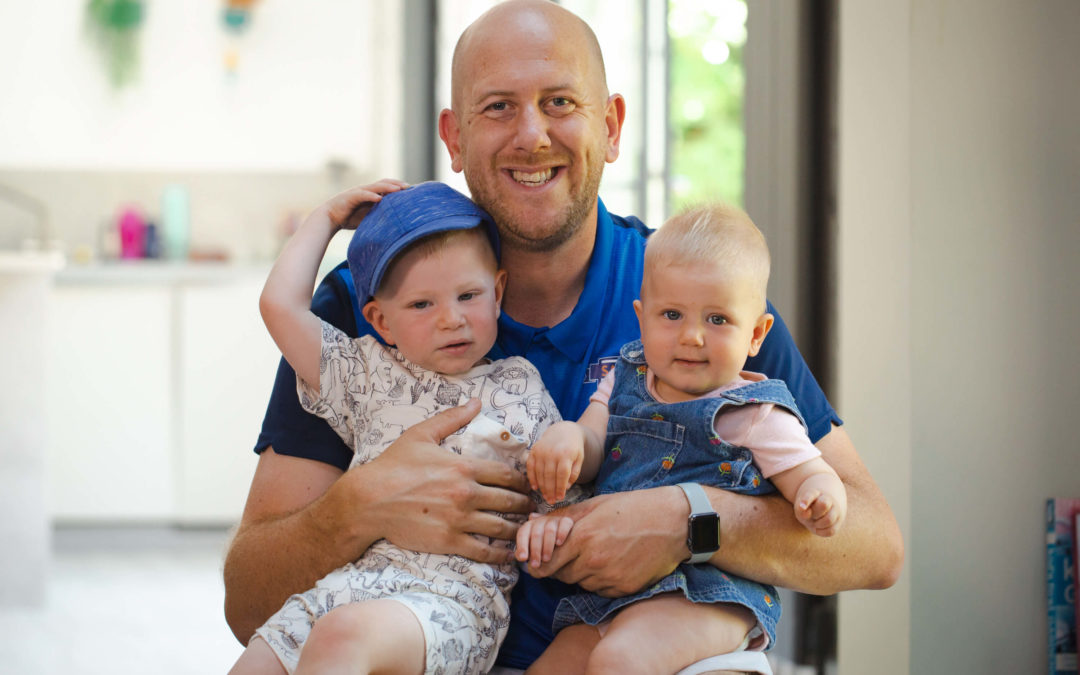Going home with your baby can feel pretty scary – suddenly it becomes all very real – you and your partner are completely in charge of protecting this little being that you co-created! So, what does your baby need from you in those first days and weeks? Well, they will need their basic physical needs to be met of course. To build your own confidence and competence, as well as to give mum time to recover, it’s a good idea to get as hands on as possible with all these tasks. Of course, your baby also needs you for a lot more than just their physical needs, it is a crucial time in bonding and nurturing their emotional wellbeing too. Here is the low down on everything you need to know for those first days…
FEEDING
A newborn baby will feed regularly, probably every two to four hours initially, but exactly how often is individual to the baby (and even to how they are feeling that day) and it can vary.
Babies tummies are tiny when they are first born, and so they will need regularly filling back up. By allowing your baby to feed when they need to, you give them the opportunity to make sure they are getting what they need when they need it. Some days it can seem like the next feed starts just as the previous one is ending, but this is normal.
It is also normal for your baby to lose a little weight after birth, which is why your midwife/health visitor may not weigh your baby again until they are a week old, so that you do not worry too much about it! This all makes sense when you consider that your baby has lost that womb environment where all their needs were being met around the clock by Mum and the placenta doing all the work.
Cord Care
Your baby will have an umbilical stump from where the cord was cut to detach them from the placenta after birth. This stump is usually secured with either a plastic cord clip or a cord tie – and after birth, all you need to do is to try and keep this area free from catching on clothing, clean and dry.
Try and keep the cord stump clear of your baby’s nappy to keep it clean, and if you wash your baby, try and avoid the area – although do not worry if it becomes wet, just let it dry out again while making sure baby is kept warm.
Your baby’s umbilical stump will normally fall off after 3-5 days, revealing their little belly button! There can still be a few more days/weeks of healing yet to happen, but your midwife/health visitor will check it to make sure it all looks ok. If you have any worries at all about the cord at any time, mention them and get the area checked just to be sure.
Nappies
One of the astounding things about becoming a parent is how most of us suddenly become very comfortable talking in all kinds of circumstances about poo and our baby’s bowel movements!
For many of us dads, the first nappy which we change is that of our own baby. We can feel a bit anxious about doing it – whether we will do it right, whether we might hurt the baby as we do it, if it will make us gag! It is normal to feel a bit anxious about it the first time, but one thing is sure, getting involved will quickly get rid of any worry.
In the early days you might find that your baby does not appreciate having their nappy changed and may cry while you are doing it. Conversely, they might love being naked and cry when you put their nappy/clothes back on! Either way, try and talk to them as you do it, and a big cuddle afterwards will usually ease any tears.
If you ever spot anything in a nappy which you are worried about, keep the nappy and its contents as they are, and show it to your midwife/health visitor/GP.
So when it is time for a nappy change, follow these simple steps:
- Have all your equipment ready and make sure your baby is in a safe place for changing. If using a changing table, never leave your baby alone, even very young babies have been known to unexpectedly roll or move, and you don’t want your baby to get hurt.
- Check out the situation. Unfasten the nappy tabs on the front and then have a peep inside to see what you are dealing with. As your baby’s genitals are exposed to cold air this can trigger a wee – so to avoid any unwanted showers, try to keep their bits covered until you are ready!
- Clean. Slide the old nappy out from under the bottom, and dispose of it. Make sure that you wipe your baby clean with your cotton wool and water or wipes, whether they have done a wee or a poo. If you have a little girl, always be sure to wipe from front to back, to avoid risks of spreading infection. With little boys, never be tempted to pull the foreskin back to clean it. It will retract on its own, but not for a good few years yet.
- New nappy. Slide the back of the new nappy behind your baby’s bottom and waist, and then pull over the front to fasten. Don’t pull the nappy too tight across Baby’s tummy when fastening – pop two fingers inside the waistband to check it there is a bit of room. If it is too tight, or too loose, just undo and then redo the tabs.
- And cuddle! Then get your little one dressed again and give them lots of cuddles!
Bathing
Bath time often becomes the domain of daddy – especially for us working dads who don’t get to see our children during the day, it can be an opportunity to have our own individual time with our little ones.
While your baby is not mobile, they only need to be bathed two or three times a week, as they don’t get that dirty, given they are not splashing about in muddy puddles just yet! Plus, between all the face cleanings and bottom changes they have each day, your baby is already getting cleaned a lot anyway!
However, if you and your baby particularly enjoy bath time, then you do not have to limit how many they have, it is perfectly fine to bathe them every day.
Bathing Top tips:
- You don’t need too much water in the bath – just a little (about 13 cm/5 in) is plenty, and check that the temperature is suitable for your baby – 37°C is recommended.
- Lower your baby’s legs in first, and use your arm under their back, head and neck as a support in the water. You can then use your other free hand to wash their body.
- Wet a flannel with the bath water and lay it over your baby’s tummy while they are in the bath – they find this comforting and it helps keep them warm too.
- Wash your baby’s face with a wet flannel or cotton wool while they are wrapped up in a towel, either before or after their bath.
- Never ever leave your baby in the bath, not even to turn your back to reach something, even if your baby is in a bath support and seems secure. A baby can drown in a couple of centimetres (1 in) of water very quickly, so it is never worth taking the risk. If you need to leave the room, scoop your baby into a towel and take them with you.
Topping-and-tailing
Topping-and-tailing is a way of washing your baby without using a bath. Basically you can use a special ‘topping-and-tailing bowl’, which has two separate containers for the water to keep things hygienic – one for baby’s ‘top’ (their head and face and upper body) and one for their ‘tail’ – bottom, genitals and legs etc. Just dip cotton wool, a flannel or a sponge into the relevant part and wash!
One of the great things about this method of bathing, is that it is easy and can be done almost anywhere, as your baby just lies on a towel. So if you are nervous about supporting your baby in the bath while they are so small (or if they just don’t like the bath) this can be as a useful alternative which does the same job!
Winding
Babies are all different when it comes to wind – some have lots of it which they need help to bring up, and some have very little. Some babies take ages to release the wind, while others bring it up straight away. The only way you will know what your baby is like, is by winding them after their feeds and seeing what happens!
There are several positions you can wind a baby in, and which works best will depend on what feels comfortable for you and your baby – you can mix them up, or stick with the same one each time.
Useful positions for winding include:
laying your baby against you so they are looking over your shoulder, while you rub or pat their back.
Or you can sit your baby on your lap and either gently rocking them back and forth, or lean them slightly forwards while rubbing their back (supporting the head and neck in both of these positions).
Another great winding position is called ‘Tiger in the tree’ where you lay your baby over your forearm, head in the crook of your arm, with their belly resting in the hand of your forearm. Keep that forearm close to you to give your baby added security from your torso, and gently rub your baby’s back with your free hand.
BONDING
The more time you spend with your baby, the closer you will end up being. Seems obvious but it is amazing how sometimes us dads can forget this, and when we feel a bit pushed out, we go off and do our own thing rather than throwing ourselves into family life a bit more. You might sometimes feel that your partner has a stronger bond with your baby, but this does not mean that you cannot create a strong and positive bond with your own baby too.
So, the first step when it comes to building that bond with your baby is just getting involved in their day, and this means getting hands on in the day-to-day practical care of your baby – nappy changes, baths, winding – the works. There is PLENTY you can do even if your baby is being breastfed – you do not need to feed your baby to bond with them.
But you can also play with your baby, and while it will be a year or two before you can play chase together or kick a ball about, babies are sociable creatures and there are lots of opportunities for bonding through simple play and interaction.
Try sticking your tongue out at your baby: you may be amazed to find that they mimic you! You can also read stories, sing songs or nursery rhymes. You can go on a walk together, try some baby massage or enjoy bath time.
Bonding is a continuous process – it’s not one single moment in time – so any time you feel that you want to strengthen that bond between yourself and your child – take the opportunity and do it.









